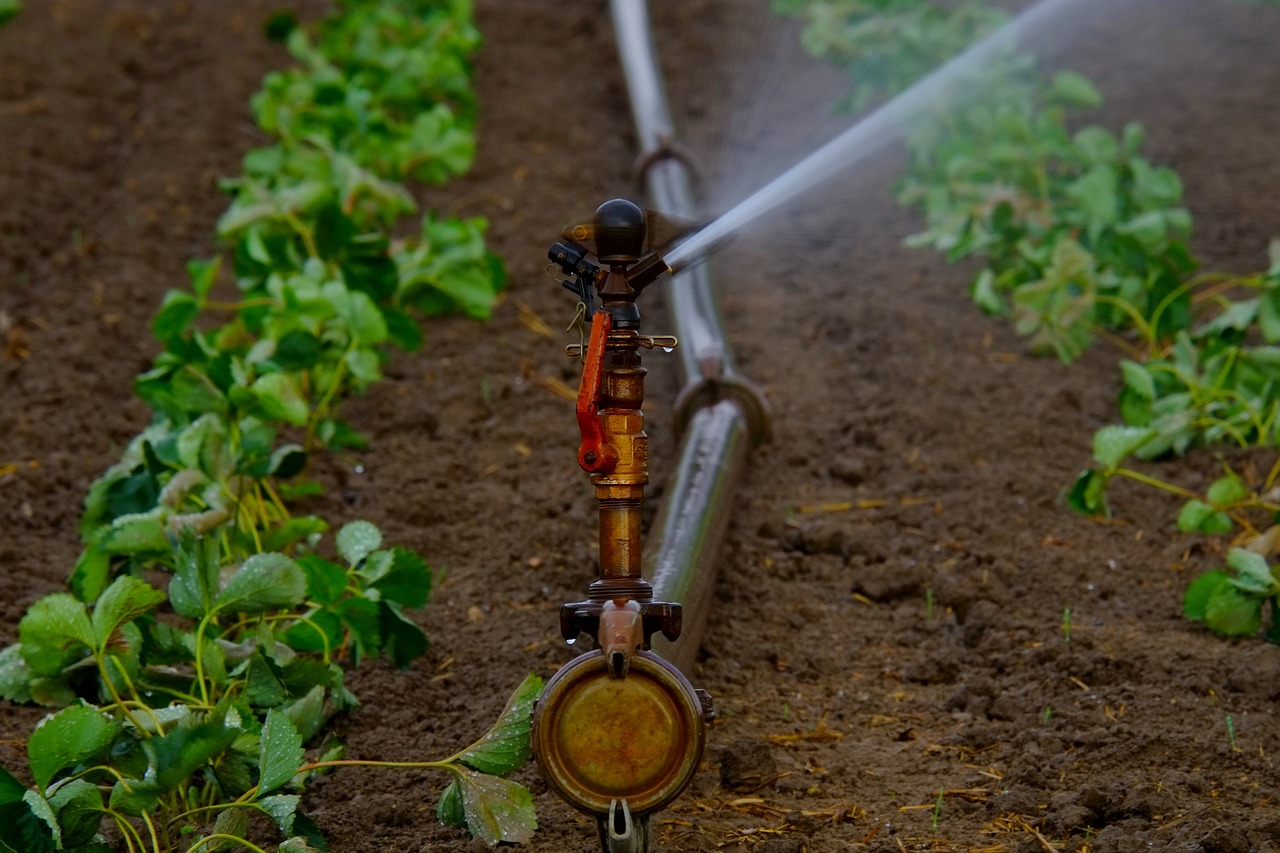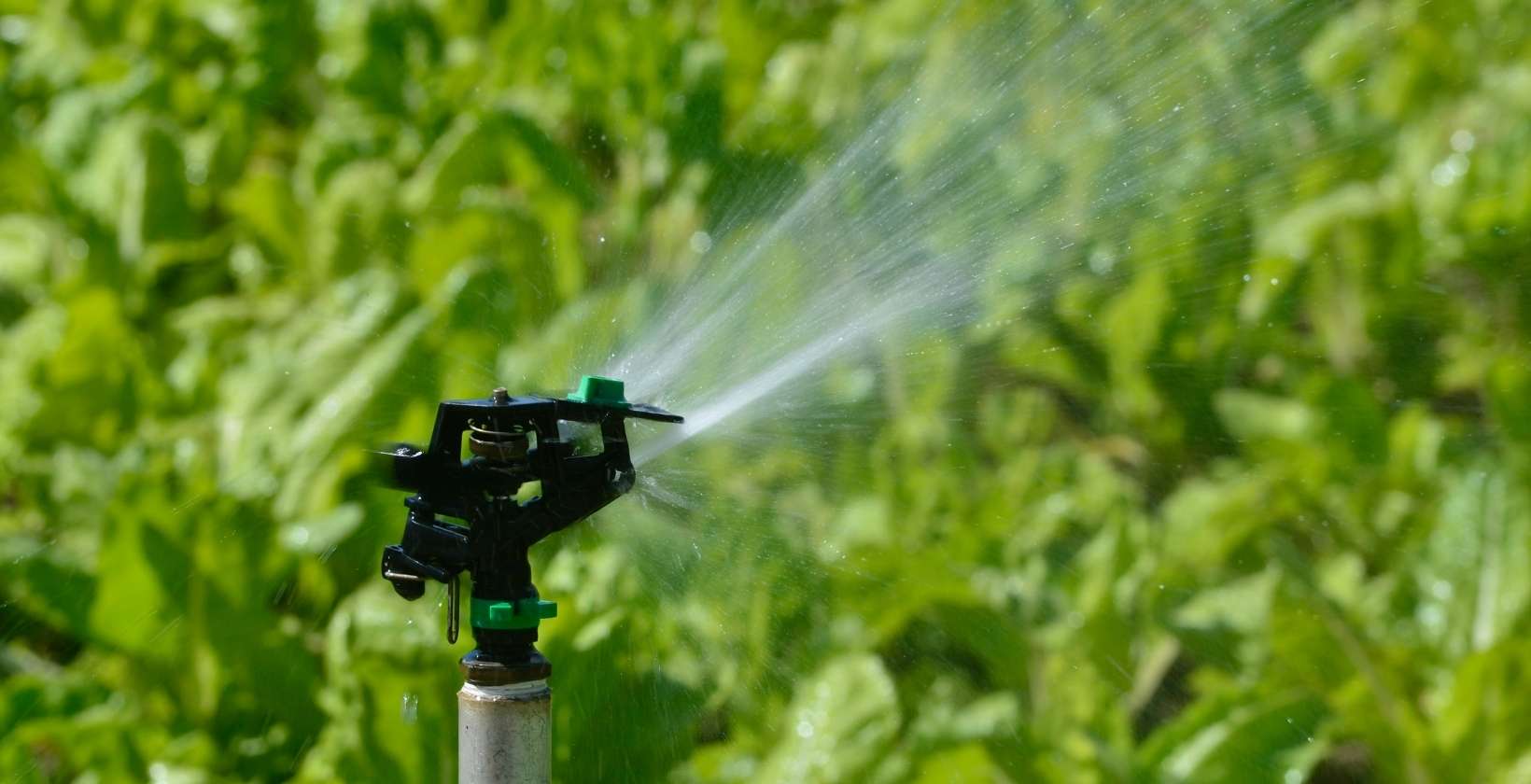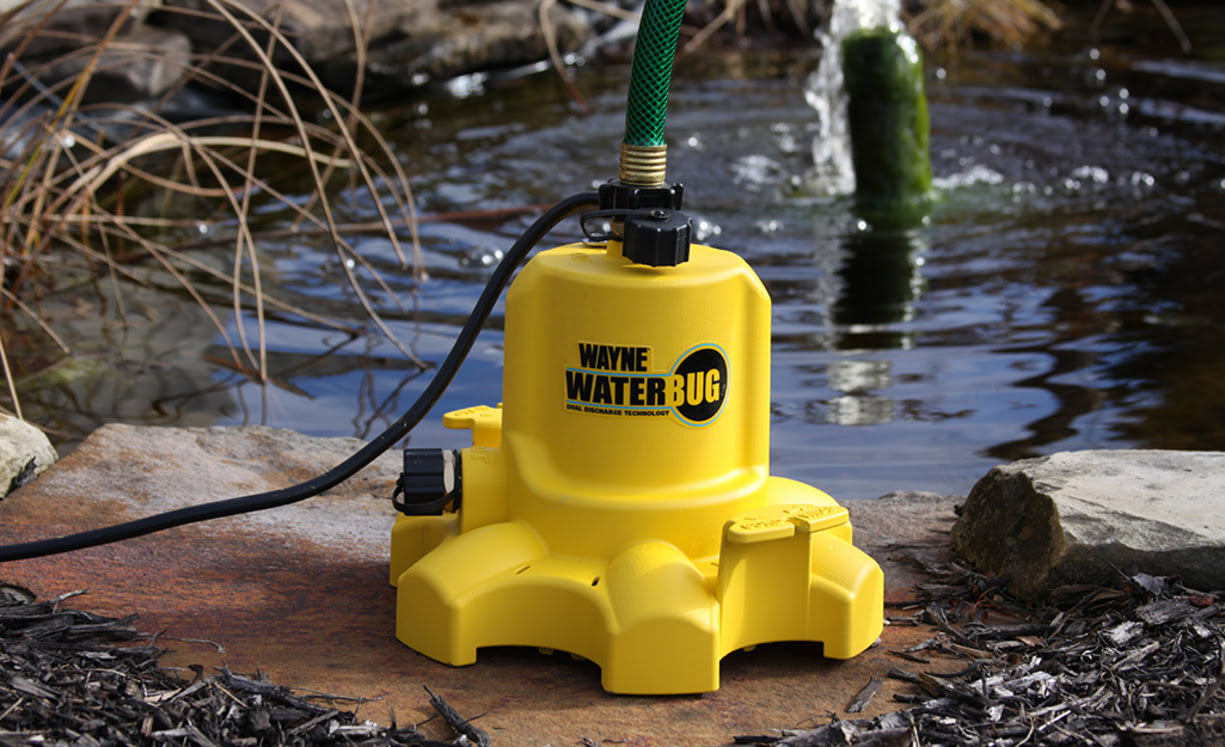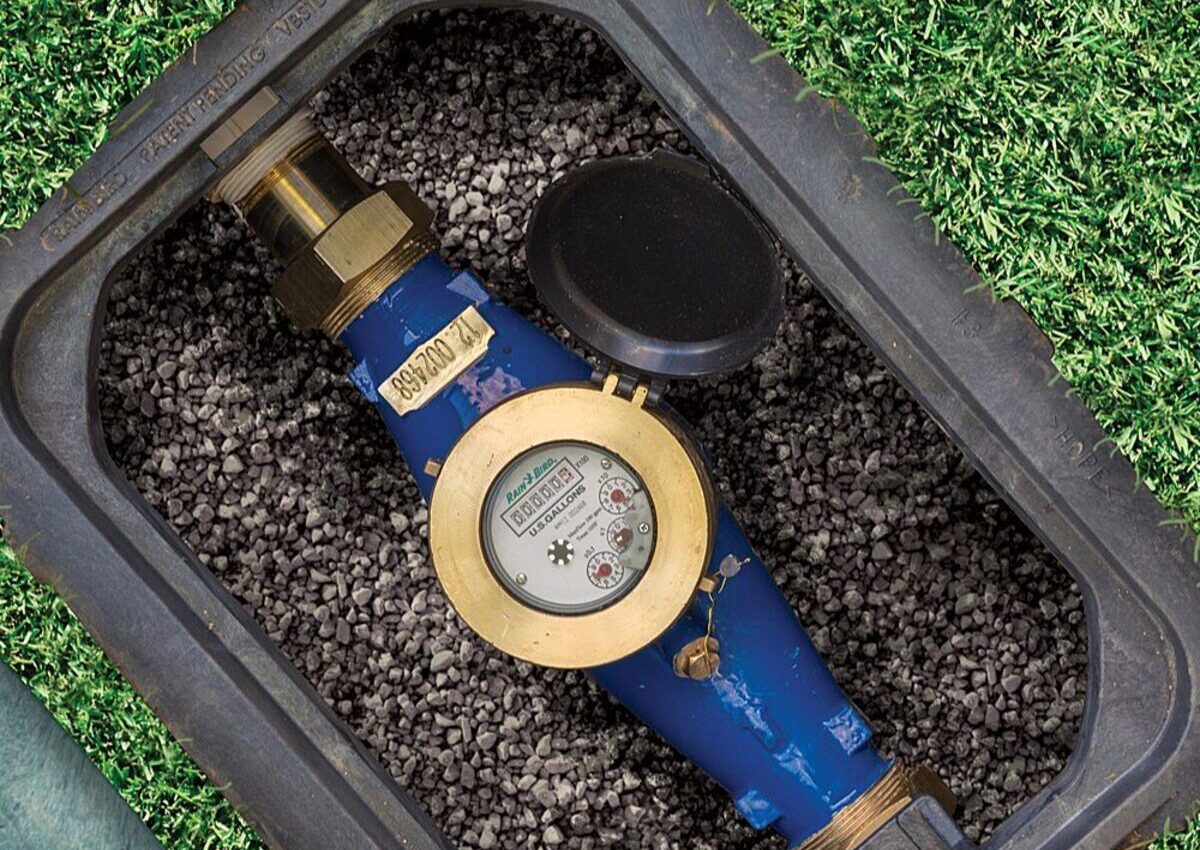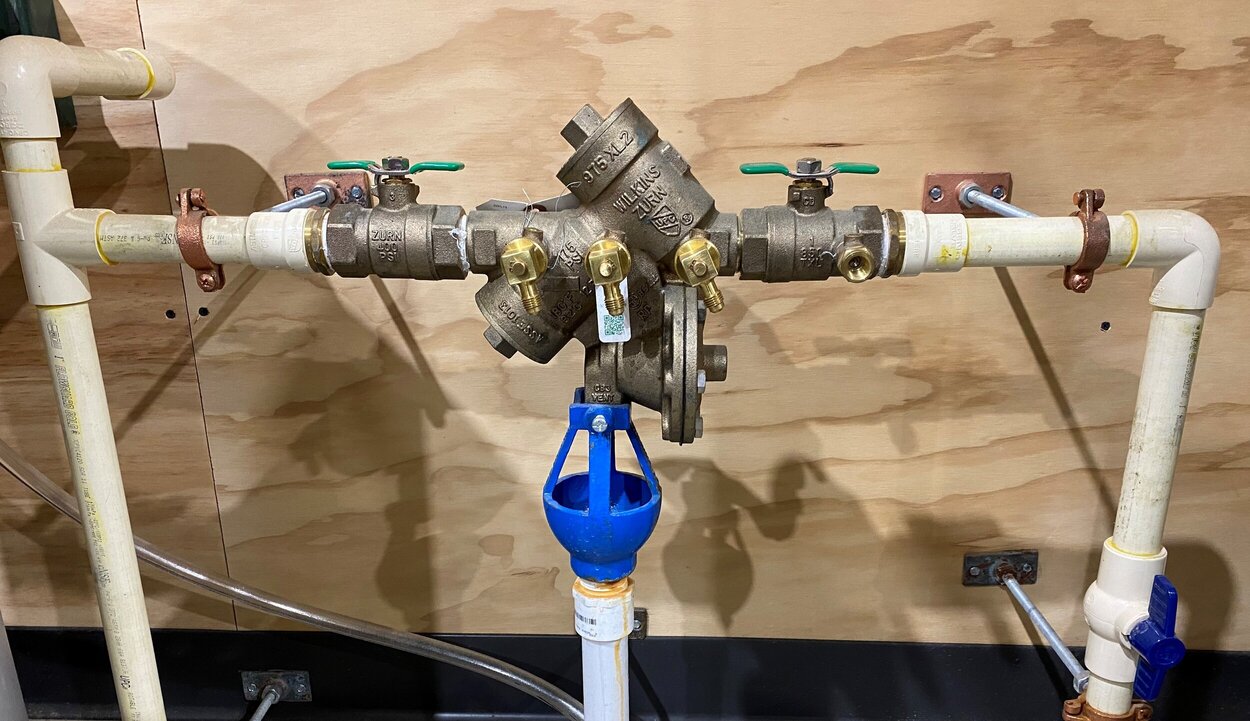Home>Gardening Basics>Tools and Equipment>What Is Furrow Irrigation Method
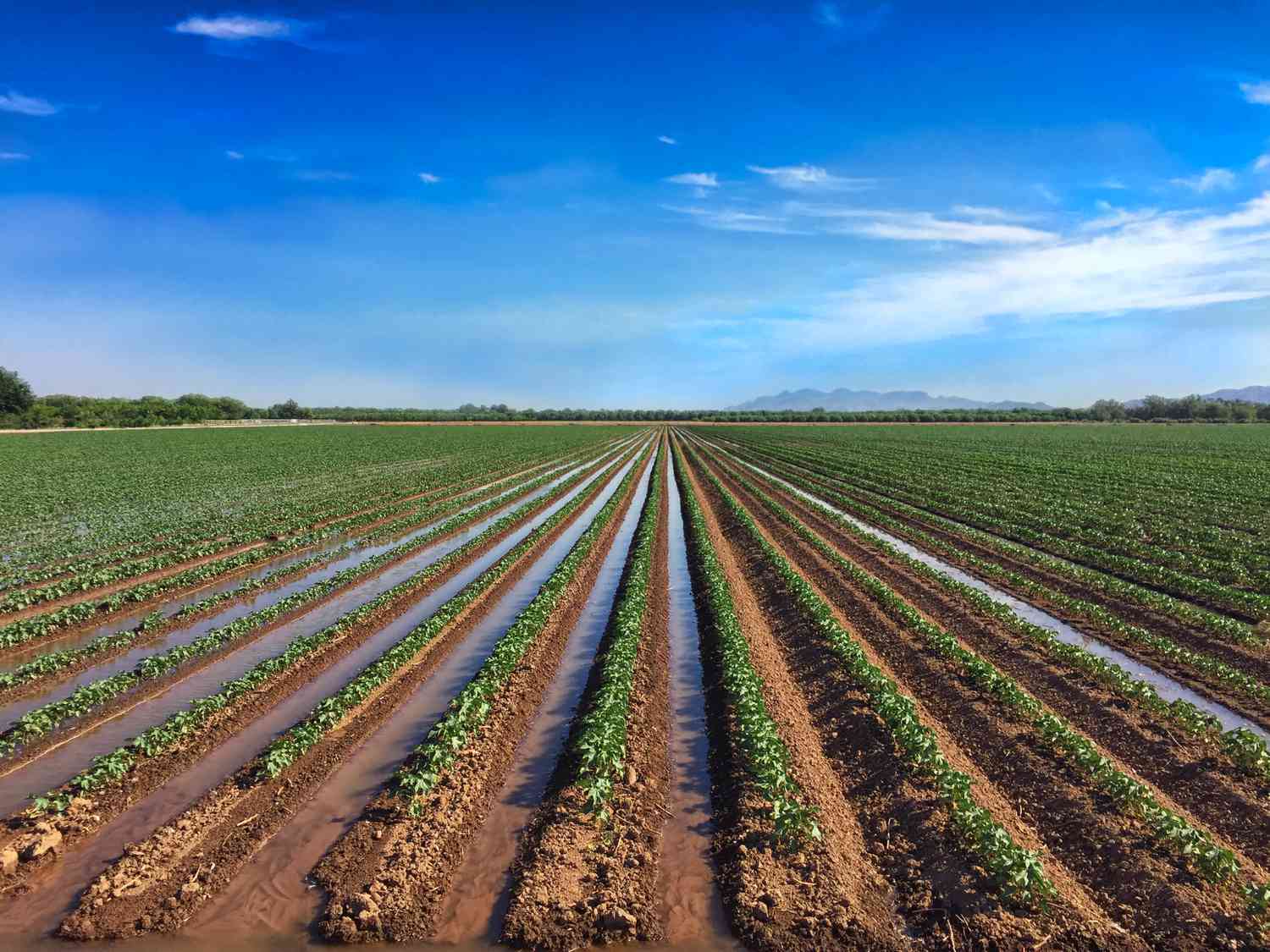

Tools and Equipment
What Is Furrow Irrigation Method
Modified: February 10, 2024
Learn about the tools and equipment used in the furrow irrigation method and how they contribute to efficient water distribution for crop growth.
(Many of the links in this article redirect to a specific reviewed product. Your purchase of these products through affiliate links helps to generate commission for Chicagolandgardening.com, at no extra cost. Learn more)
Table of Contents
- Introduction
- Definition of Furrow Irrigation
- How Furrow Irrigation Works
- Advantages of Furrow Irrigation
- Disadvantages of Furrow Irrigation
- Factors to Consider for Successful Furrow Irrigation
- Best Practices for Implementing Furrow Irrigation
- Comparing Furrow Irrigation with Other Irrigation Methods
- Case Studies of Successful Furrow Irrigation Implementation
- Conclusion
Introduction
When it comes to irrigating agricultural fields, there are several methods to choose from, each with its own advantages and disadvantages. One popular irrigation method that has been used for centuries is furrow irrigation. This method involves the creation of small channels, or furrows, along the length of the field, through which water is delivered to the crops.
Furrow irrigation is a simple yet effective technique that allows for efficient water distribution and increased crop yields. It is commonly used in areas with flat or gently sloping terrain, and is particularly suitable for row crops such as corn, soybeans, and cotton.
In this article, we will explore how furrow irrigation works, the advantages and disadvantages of this method, factors to consider for successful implementation, best practices, and a comparison with other irrigation methods. We will also examine case studies of successful furrow irrigation implementation to better understand its practical applications.
By the end of this article, you will have a comprehensive understanding of furrow irrigation and its role in modern agriculture.
Definition of Furrow Irrigation
Furrow irrigation is an irrigation method that involves the use of small channels or furrows to deliver water directly to the plant roots. These furrows are typically created along the length of the field, parallel to the crop rows. Water is supplied to the furrows either by gravity or through irrigation systems such as pumps and sprinklers.
The size and spacing of the furrows can vary depending on factors such as soil type, crop type, and water availability. Generally, furrows are shallow and narrow, ranging from 8 to 12 inches in depth and 12 to 36 inches in width. The furrows are usually spaced at regular intervals, ensuring uniform water distribution across the field.
Unlike other irrigation methods that involve flooding the entire field, furrow irrigation targets the specific planting areas, minimizing water wastage and reducing the risk of soil erosion. This method allows for more precise water control, as the water is applied directly to the root zone of the plants.
Furrow irrigation can be done manually, where farmers create the furrows using hand tools, or it can be mechanized using specialized implements that create and maintain the furrows automatically. Mechanized furrow irrigation systems help improve efficiency and reduce labor requirements, making it easier for farmers to adopt this method.
Overall, furrow irrigation is a widely used and versatile irrigation method that offers flexibility in water application, making it suitable for a variety of crops and soil conditions.
How Furrow Irrigation Works
Furrow irrigation follows a simple process that ensures water is delivered directly to the plant roots. Here is a step-by-step explanation of how furrow irrigation works:
- Field Preparation: Before implementing furrow irrigation, the field is leveled to ensure uniform water distribution. Any obstacles or obstructions that may hinder the flow of water in the furrows are removed.
- Furrow Formation: Furrows are created along the length of the field, parallel to the crop rows. The size and spacing of the furrows may vary depending on the specific requirements of the crops being grown and the soil conditions.
- Water Application: Water is supplied to the furrows either by gravity or through irrigation systems. In gravity-fed furrow irrigation, water is released at one end of the field and allowed to flow through the furrows, gradually saturating the soil and reaching the plant roots. In mechanized furrow irrigation, pumps and sprinklers are used to deliver water to the furrows.
- Water Infiltration: As the water flows through the furrows, it infiltrates the soil and provides moisture to the plant roots. The rate of water infiltration depends on factors such as soil type, compaction, and slope of the field.
- Water Management: Proper management of water is crucial in furrow irrigation. Farmers monitor the flow rate and duration of water application to ensure that crops receive the required amount of water without causing excessive runoff or waterlogging. Techniques such as surge irrigation can be used to optimize water distribution by pulsing water delivery in specific intervals.
- Monitoring and Adjustments: Throughout the irrigation process, farmers monitor soil moisture levels and make necessary adjustments to ensure uniform water distribution. They may also take into account factors like weather conditions, crop water requirements, and soil moisture retention capacity to determine the optimal irrigation schedule.
By following these steps, furrow irrigation provides a controlled and efficient method of delivering water to crops, helping to promote healthy plant growth and maximize crop yields.
Advantages of Furrow Irrigation
Furrow irrigation offers several advantages that make it a popular choice for farmers around the world. Let’s explore some of the key benefits of using this irrigation method:
- Water Efficiency: Furrow irrigation allows for precise water application directly to the root zone of plants, minimizing water waste and maximizing efficiency. By delivering water where it is needed most, furrow irrigation reduces evaporation and runoff, thereby conserving water resources.
- Flexibility: Furrow irrigation is versatile and can be adapted to various crop types, soil conditions, and field sizes. The size and spacing of the furrows can be adjusted based on the specific requirements of the crops being grown, allowing farmers to tailor the irrigation system to their needs.
- Enhanced Nutrient Delivery: The controlled application of water through furrow irrigation allows for efficient nutrient uptake by the plants. As water seeps into the soil, it carries essential nutrients, making them readily available to the crops. This promotes healthy plant growth and improves overall crop productivity.
- Reduced Erosion: By directing water flow through the furrows, furrow irrigation minimizes the risk of soil erosion. The channels created by the furrows help to guide the water gently along the crop rows, preventing excessive runoff and the loss of topsoil. This is particularly beneficial on sloping fields where erosion is a concern.
- Cost-Effective: Furrow irrigation is a cost-effective method compared to other irrigation techniques. It requires less investment in infrastructure and equipment, making it accessible to both small-scale and large-scale farmers. Additionally, furrow irrigation can be easily implemented without the need for highly technical or complex systems.
- Can be Combined with Modern Technologies: Furrow irrigation can be integrated with modern technologies, such as automated control systems and soil moisture sensors, to further improve water management efficiency and reduce labor requirements. This allows for better precision in irrigation scheduling and resource allocation.
Overall, the advantages of furrow irrigation make it an attractive option for farmers looking to optimize water use, minimize soil erosion, and achieve higher crop yields in a cost-effective and sustainable manner.
Disadvantages of Furrow Irrigation
While furrow irrigation offers several benefits, there are also some downsides to consider. Let’s explore the disadvantages of this irrigation method:
- Uneven Water Distribution: One of the main challenges of furrow irrigation is achieving uniform water distribution across the entire field. Factors such as variations in soil texture, slope, and furrow length can result in uneven water application. This can lead to under-irrigation or over-irrigation in certain areas, affecting crop growth and yield.
- Potential for Soil Erosion: Although furrow irrigation helps reduce the risk of soil erosion compared to other methods, it can still contribute to erosion if not properly managed. Water flowing through the furrows can concentrate and cause erosion in certain parts of the field, especially if the field has steep slopes or the soil is prone to erosion.
- Labor Intensive: Manual furrow irrigation can be labor-intensive, especially when it comes to creating and maintaining the furrows. The process requires regular monitoring, adjustments, and manual labor for tasks such as removing obstacles, cleaning the furrows, and managing water flow. Mechanized furrow irrigation systems can help reduce labor requirements, but they come with their own set of costs and maintenance needs.
- Higher Weed Growth: Furrow irrigation can contribute to increased weed growth in the furrows. The moist environment created by the water flow and the soil in the furrows can promote weed germination and growth, leading to competition for resources such as water and nutrients. Proper weed management practices, such as timely removal or herbicide use, are necessary to mitigate this issue.
- Limited Applicability in Rocky or Steep Terrain: Furrow irrigation is best suited for flat or gently sloping fields. In rocky or steep terrain, creating and maintaining furrows can be challenging or even impossible. In such cases, alternative irrigation methods may be more appropriate, such as drip irrigation or sprinkler systems.
- Water Supply Limitations: Furrow irrigation heavily relies on the availability of sufficient water supply. In regions with limited water resources, implementing furrow irrigation may not be feasible or sustainable. Water scarcity can lead to inadequate irrigation and negatively impact crop growth and yield.
Despite these disadvantages, with proper management and implementation techniques, the drawbacks of furrow irrigation can be minimized, allowing farmers to effectively utilize this irrigation method to achieve successful crop production.
Factors to Consider for Successful Furrow Irrigation
For a successful furrow irrigation system, several important factors need to be considered. These factors play a crucial role in maximizing water efficiency, crop productivity, and overall effectiveness of the irrigation method. Let’s explore some key considerations for successful furrow irrigation:
- Soil Type and Texture: The soil type and texture directly impact water movement and infiltration in furrow irrigation. Soil with good water-holding capacity, permeability, and structure is ideal for efficient water distribution and proper root development.
- Field Slope and Topography: The slope of the field affects the water flow and distribution in furrow irrigation. Fields with steep slopes may experience faster water runoff, requiring additional measures such as terracing or contour furrows to control erosion and ensure uniform water application.
- Crop Water Requirements: Understanding the specific water requirements of the crops being grown is essential for determining the appropriate irrigation schedule and duration. Different crops have varying stages of water demand, and adjusting irrigation accordingly helps optimize crop growth and prevent overwatering.
- Climate and Evaporation: Consider the prevailing climate conditions, including temperature, humidity, and wind, as they can affect the evaporation rate and water loss from the furrows. Adapting irrigation practices to account for these factors helps avoid excessive water evaporation and optimize water usage.
- Water Source and Availability: Consider the availability and reliability of the water source for furrow irrigation. Assess the capacity of the water source to meet the crop water requirements throughout the irrigation season. Assessing the quality of the water source and its potential impact on soil and crop health is also important.
- Irrigation Scheduling and Frequency: Proper scheduling and frequency of irrigation are crucial for furrow irrigation. Balancing the need for providing adequate water for optimal plant growth with avoiding excessive soil saturation or water runoff is key. Monitoring soil moisture levels and adjusting the irrigation schedule accordingly helps maintain optimal soil moisture conditions.
- Fertilizer Application: Consider the integration of fertilizer application with furrow irrigation. Properly timing and distributing fertilizers through the irrigation system can ensure efficient nutrient uptake by the plants, enhancing overall crop health and productivity.
- Management and Maintenance: Regular maintenance of the furrow irrigation system is necessary for its effective operation. This includes removing obstructions from the furrows, repairing any damage, and monitoring the uniformity of water distribution. Appropriate maintenance practices help minimize water wastage and ensure optimal system performance.
By considering these factors and adapting furrow irrigation practices accordingly, farmers can enhance water efficiency, improve crop productivity, and achieve successful outcomes in their agricultural operations.
Best Practices for Implementing Furrow Irrigation
Implementing furrow irrigation effectively requires following certain best practices to maximize water efficiency and optimize crop growth. By adhering to these practices, farmers can ensure successful implementation of furrow irrigation. Here are some key best practices to consider:
- Field Preparation: Proper field preparation is crucial before implementing furrow irrigation. Ensure that the field is leveled, removing any obstacles or debris that may hinder water flow through the furrows. Make necessary adjustments to the field slope to minimize uneven water distribution.
- Optimal Furrow Design: Pay attention to furrow design, including furrow length, spacing, and dimensions. Design furrows to match the crop requirements and soil conditions. Consider the water availability and flow rate to determine the appropriate furrow dimensions for efficient water distribution.
- Irrigation System Maintenance: Regularly inspect and maintain the irrigation system to ensure optimal performance. Clean the furrows regularly to avoid clogging and remove any debris. Regularly check and repair any leaks or damages to the system to minimize water wastage.
- Proper Water Management: Monitor and manage water application to ensure uniformity and avoid over-irrigation or under-irrigation. Use techniques such as surge irrigation or alternate wetting and drying to improve water distribution and minimize water loss.
- Soil Moisture Monitoring: Continuously monitor soil moisture levels to determine the appropriate timing and frequency of irrigation. Utilize soil moisture sensors or manual field inspections to assess the moisture content in the root zone and make informed decisions regarding irrigation scheduling.
- Timely Irrigation: Time the irrigation cycles according to crop water requirements and the prevailing weather conditions. Consider factors such as crop stage, soil moisture, evaporation rate, and rainfall patterns to determine the optimal time for irrigation and avoid water stress or excessive moisture levels.
- Weed and Pest Management: Implement effective weed and pest management strategies to minimize competition for resources and protect crop health. Regularly remove weeds from the furrows and use appropriate herbicides or integrated pest management techniques to control pests and diseases.
- Nutrient Management: Incorporate proper nutrient management practices in furrow irrigation. Apply fertilizers at the appropriate time and in the right quantities to meet the crop’s nutritional needs. Consider soil testing and the specific nutrient requirements of the crop to maintain optimal nutrient levels in the soil.
- Farmers’ Skills and Knowledge: Continuous learning and staying updated with the latest research and practices in furrow irrigation are essential. Attend workshops, training sessions, or consult with agricultural experts to improve understanding and enhance skills in implementing furrow irrigation effectively.
By following these best practices, farmers can ensure efficient water usage, minimize environmental impacts, and achieve successful outcomes with furrow irrigation in their agricultural operations.
Comparing Furrow Irrigation with Other Irrigation Methods
When it comes to irrigation, there are various methods available, each with its own set of advantages and limitations. Let’s compare furrow irrigation with other commonly used irrigation methods to understand their differences:
- Sprinkler Irrigation: Sprinkler irrigation involves the use of sprinkler heads or nozzles to distribute water over the field. Unlike furrow irrigation, which provides water directly to the root zone, sprinkler systems spray water over the crop canopy. Sprinkler irrigation is effective for even water distribution, suitable for a wide range of crop types, and allows for flexibility in irrigation scheduling. However, it may result in higher water loss due to evaporation, and there can be challenges with achieving precise water application and potential crop damage or disease if not properly managed.
- Drip Irrigation: Drip irrigation delivers water directly to the root zone through a network of small emitters, minimizing water loss through evaporation and surface runoff. Drip irrigation is highly efficient, conserves water, and promotes targeted water and nutrient delivery, which is advantageous for moisture-sensitive crops and arid regions. However, it can be more expensive to install and maintain, requires careful filtration and pressure regulation, and may have limited suitability for certain soil types or topographies.
- Surface Irrigation: Surface irrigation involves the flooding or ponding of water over the entire field. It is commonly used in areas with low-cost or abundant water sources. While surface irrigation may be simple and cost-effective, it can result in significant water loss due to evaporation and runoff, leading to inefficient water use and potential soil erosion. Furrow irrigation is a form of surface irrigation but offers more controlled water distribution, minimizing water waste and erosion risks compared to traditional surface flooding.
- Center Pivot Irrigation: Center pivot irrigation systems consist of a central pivot point with sprinklers attached. These systems rotate around the central point, providing water to the crops in a circular pattern. Center pivot irrigation allows for large-scale coverage, reduces labor requirements, and can be automated. However, it may not be suitable for irregularly shaped fields and can lead to uneven water distribution at the outer edges of the circular coverage, requiring additional management practices to ensure uniform irrigation.
- Aerial Irrigation: Aerial irrigation involves the use of aircraft to spray water over crops. It is primarily used for specialized crops, such as fruits and vegetables, with high water demands. Aerial irrigation allows for precise application, minimal soil compaction, and broad coverage. However, it can be expensive, limited to specific crop types and terrains, and may be subject to weather constraints and regulatory requirements.
Each irrigation method has its own strengths and limitations, and their suitability depends on factors such as crop type, soil conditions, water availability, and farm management practices. Furrow irrigation’s advantages lie in its simplicity, cost-effectiveness, and adaptability to various crops and soil types. It offers a balance between controlled water application and minimizing water loss, making it a widely used and practical irrigation method.
Case Studies of Successful Furrow Irrigation Implementation
Several case studies demonstrate the successful implementation of furrow irrigation in different agricultural settings. These examples highlight the benefits and effectiveness of furrow irrigation in improving water efficiency and crop productivity. Let’s explore a few notable case studies:
- Case Study 1: Corn Production in the Midwest: In the corn belt region of the United States, furrow irrigation has been widely adopted by farmers to maximize corn yield. By implementing furrow irrigation, farmers have achieved better control over water application, resulting in reduced water wastage and increased nutrient efficiency. This has led to higher corn yields compared to conventional flood irrigation methods, allowing farmers to optimize water resources while maintaining profitability.
- Case Study 2: Cotton Farming in Australia: In Australia’s cotton industry, furrow irrigation has played a key role in ensuring water efficiency and sustainability. Through furrow irrigation, cotton farmers have successfully reduced water use by precisely targeting water delivery to the crop root zone. This has not only improved water efficiency but also reduced the risk of disease spread and weed growth. Implementing furrow irrigation has helped Australian cotton farmers maintain a competitive edge while minimizing the impact on water resources.
- Case Study 3: Rice Cultivation in Southeast Asia: Furrow irrigation has also proven to be effective in rice production, particularly in parts of Southeast Asia. By utilizing furrows in rice paddies, farmers have achieved significant water savings compared to traditional continuous flooding methods. Furrow irrigation allows for controlled water delivery at the base of the rice plants, reducing water loss through evaporation and seepage. This has not only conserved water but also improved crop health, resulting in higher rice yields and improved livelihoods for rice farmers in the region.
- Case Study 4: Vegetable Farming in Spain: In vegetable-growing regions of Spain, furrow irrigation has been successfully adopted to support the cultivation of various crops, including tomatoes, peppers, and lettuce. Farmers have found that furrow irrigation provides precise water delivery and enables effective management of nutrient solutions. The controlled application of water and nutrients through furrow irrigation has resulted in improved crop quality, reduced water usage, and enhanced productivity, contributing to the overall sustainability and profitability of vegetable farming in the region.
These case studies demonstrate the diverse applications of furrow irrigation in different crops and regions. The success stories highlight the importance of proper planning, implementation, and management practices in achieving optimal results with furrow irrigation, leading to improved water efficiency and higher crop yields.
Conclusion
Furrow irrigation is a versatile and effective method for delivering water to crops, offering numerous advantages and opportunities for increased water efficiency and crop productivity. By creating small channels along the length of the field, furrow irrigation provides direct water delivery to the roots, minimizing water waste and reducing the risk of soil erosion. It allows for precise water control, making it suitable for a variety of crops and soil conditions. Furrow irrigation can be implemented manually or mechanized, providing flexibility for farmers with different resources and capabilities.
While furrow irrigation has its advantages, it’s important to consider the potential disadvantages and challenges associated with this method, such as uneven water distribution and the need for regular maintenance. Factors such as soil type, field slope, climate, and crop water requirements need to be taken into account to ensure successful implementation.
Investing in best practices, such as proper field preparation, optimal furrow design, water management, and continuous monitoring and adjustment, can help overcome these challenges and maximize the benefits of furrow irrigation. Additionally, maintaining a strong knowledge base, staying up to date with the latest research and innovations, and learning from successful case studies can further enhance the implementation of furrow irrigation.
By understanding and implementing furrow irrigation effectively, farmers can achieve improved water efficiency, enhanced crop yields, and sustainable agricultural practices. The choice of irrigation method depends on various factors, including crop type, field characteristics, water availability, and resource constraints. However, furrow irrigation remains a popular and viable option for many farmers worldwide, allowing them to optimize water usage, conserve natural resources, and contribute to a sustainable and productive agricultural industry.

